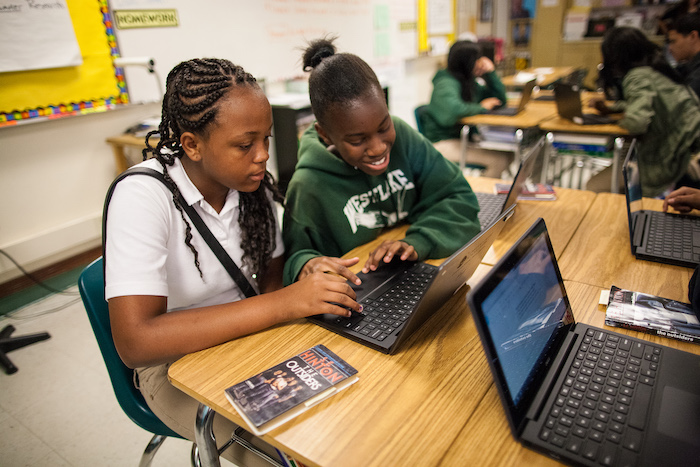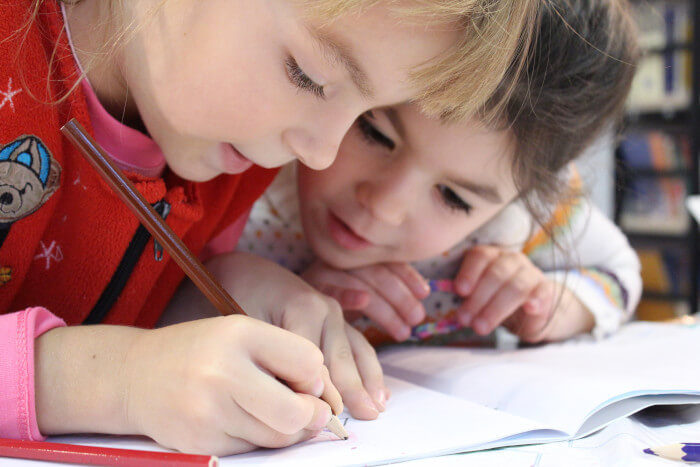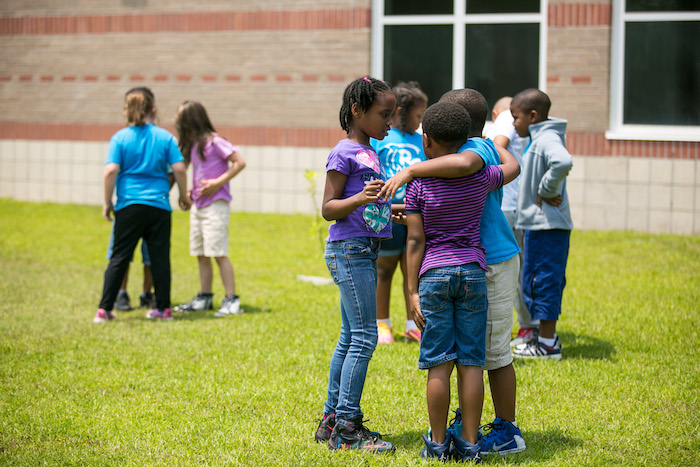When setting up a classroom exercise or activity, you’re often required to arrange students into groups. Is it better to put them into heterogeneous groups, which comprise students of differing ability, or homogeneous groups, which contain students of similar ability? This article offers a brief introduction to the pros and cons of each before considering when you might choose one type of grouping over the other.
Heterogeneous groups

Benefits for below-grade-level students
Let’s start with the benefits of heterogeneous groups, the first of which is the advantage they offer below-grade students. In a group that has a mixed ability, these students have the opportunity to follow the lead of their more capable peers, picking up things that they may not learn from you. They could also feel more confident speaking up about their confusion with a smaller group of their peers than they would in your presence in front of the whole class.
Benefits for at-grade students
At-grade students also benefit from being grouped with their more capable peers. Working closely with others can help land small kernels of knowledge that may further their understanding and progress. In the same way, gifted students can learn a thing or two from at-grade students. If they’re exposed to a slightly different perspective or method, it can deepen their own understanding of a subject.
Benefits for above-grade students
Heterogeneous grouping, on the other hand, can benefit more gifted students by requiring them to step up and assume a leadership role within their group. Many capable students have an innate understanding of their abilities as compared to their classmates and naturally tend to guide the direction of an exercise when asked to do so. In a best-case scenario, such students are empathetic to their struggling classmates and do their best to help them along. Better still, there’s a chance they’ll know how to best communicate with a struggling student, especially if they’re friends, and could find ways to convey information in a way they’ll understand. In any case, such groups are a great opportunity for talented students to develop their soft skills, like interdependence and leadership.
Disadvantages for above-grade students
While some gifted students relish the opportunities and responsibilities that heterogeneous groups provide, others resent them. Being aware of a hierarchy of competency and skills, as well as what their classmates are capable of, such students know there’s a chance they’ll carry a larger chunk of the work while having to deal with disinterested or disruptive members within a group.
It’s likely that the above-grade-level students won’t be as challenged by an exercise and but end up frustrated by everyone’s inability to complete it as well or as quickly as they can. While they’ll get a chance to develop other skills, they’ll lose out on the chance to learn as much as they could have from the task at hand. In the worst-case scenario, if such a student is particularly spirited or needs constant stimulation, they could become disruptive and hinder the rest of the group’s, or even the class’s learning.
Disadvantages for at-grade students
For students at grade level and below is that there’s a chance they’ll take a back seat in heterogeneous groups and let their more gifted classmates do all the work. This is especially the case if the more capable students have strong personalities, a focus on finishing the task as quickly as possible, and are dismissive of their peers’ abilities and contributions.
Homogeneous grouping

Everyone at their own pace
The first benefit of homogeneous groups is that there’s greater scope for everyone to perform the task or exercise at their own pace. Surrounded by peers of roughly their own ability, gifted students, in particular, are less likely to do all the work while others rush to keep up or fade into the background entirely. Within groups of more capable students, enthusiasm is likely tempered as equally competent peers challenge their assumptions and knowledge.
Meanwhile, students at grade level or below may find some synergy when grouped together. Able to meet the challenges of a task at their own pace, instead of dragging along by their peers, they’ll have a chance to persevere and work through problems together.
As opposed to the typical pattern of heterogeneous groups, where the most gifted students assume control, all kinds of hidden talents and strengths can emerge when students are grouped homogeneously. Surrounded by peers of similar ability, some students may become competitive, with those who would otherwise slack off now feeling motivated to contribute. This is in stark contrast to feeling like they have no valid contribution to make when grouped with more gifted students in the class. Instead, in this case, at- and below-grade students may welcome the chance to play a larger role within a group, boosting their confidence and allowing them to view themselves differently.
Assignment difficulty is scalable
Another major benefit of homogenous grouping is your increased ability to change the difficulty of the assigned exercise according to each group’s ability. Let’s say, for the sake of simplicity, that you’ve split your class into three groups — one, two, and three — where group one contains your most gifted students and group three contain those that tend to struggle. After setting out an exercise, you come to find that while it’s stimulating enough for group two, it’s too easy for group one and too difficult for group three.
With homogenous groups, you can make the exercise more difficult for group one, adding elements that will stretch and challenge them so they get more out of it. For group three, meanwhile, you can make the exercise easier, taking out parts that seem to be giving them the most trouble and paving a clearer path to progress. Better yet, with groups one and two occupied, you can devote more of your attention to group three, giving them a little more time to make eventual breakthroughs and understand the exercise. Whether it’s through a more challenging variation of the exercise or having more pieces fall into place after spending more time with you, homogenous groups enable every student to learn more.
Disadvantages of homogeneous groups
Homogeneous groups can have their drawbacks, too. There’s a possibility that you could create a group of non-participants when putting struggling students together. Without a more capable student to guide them along, a group of below-grade students could become overwhelmed, maybe even disruptive, and not make much progress as a result.
There’s also a chance that placing the gifted students in the same group may cause a “too many cooks” scenario, where several members of the group feel they’re best suited to carry out the key tasks of the exercise. As a result, there can be a lack of proper delegation, with some elements of an exercise being overcooked, while others being undertaken reluctantly and not carried out as thoroughly as a result.

Heterogeneous or homogeneous?
The type of grouping you choose in the classroom depends on the learning outcome of the exercise and what you’re trying to achieve. If you want to create an environment that elevates struggling students and helps them develop the independence and teamwork skills that come from less reliance on the teacher, heterogeneous groups are best. However, you’d be diminishing what the gifted and at-grade students learn from the exercise, though they potentially get to work on their communication and leadership skills instead.
If it’s important for the students to take as much away from the actual exercise, and you’re prepared to change the task parameters to make it more challenging or accessible, then homogeneous grouping is the way to go.
Chances are that you’ll have ample opportunity to use both grouping methods and see which one works best.
If you don’t yet have a preference, or even if you do, it’s a great idea to switch between the two to see how your students respond. Doing so will allow you to get to know your students better. You’ll be able to observe how they respond in various scenarios with different classmates and styles of grouping. It can be even more enlightening if you keep track of your observations in a journal so you can build on your experiences, do more of what worked well, and cut back on what didn’t.
Classroom Management


